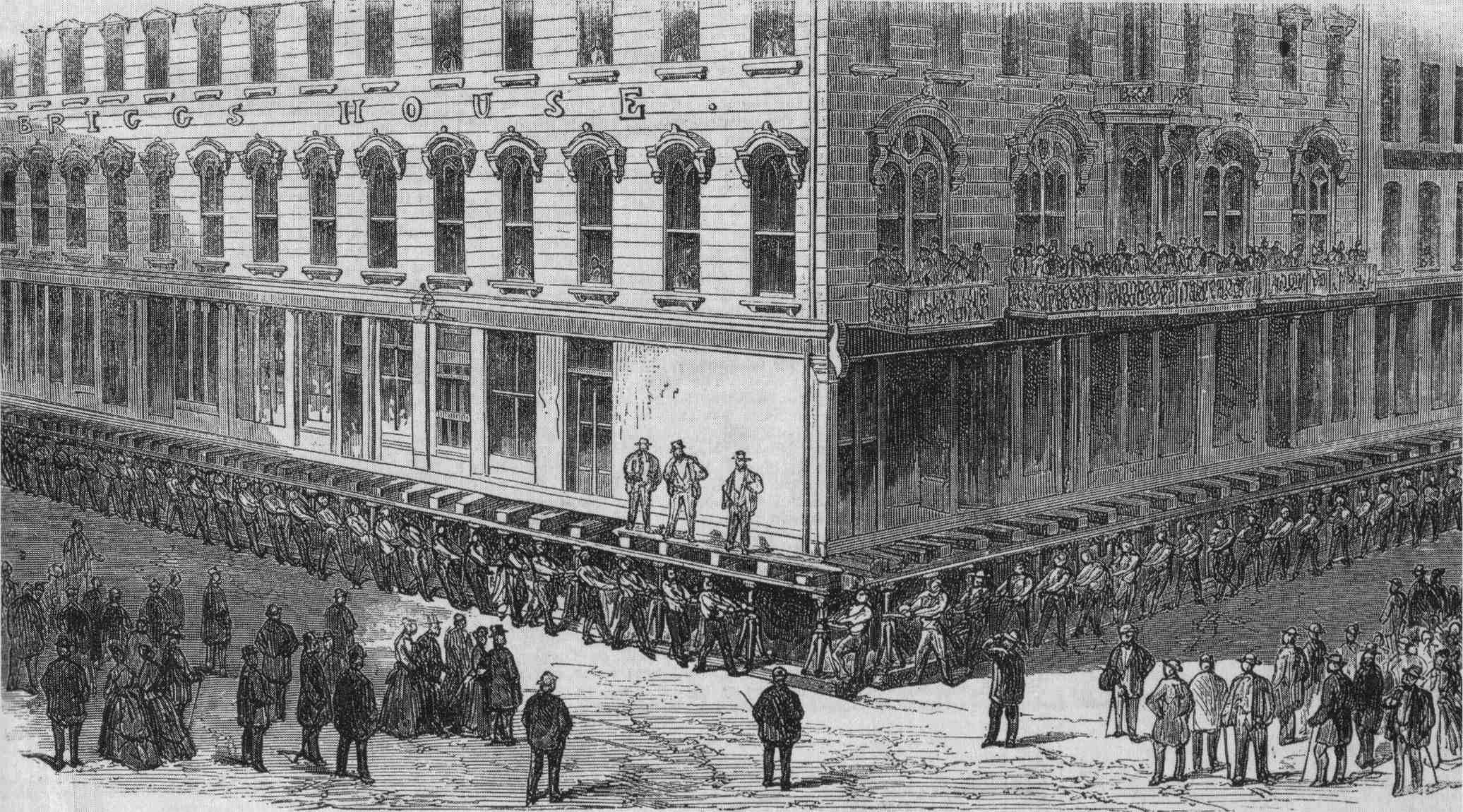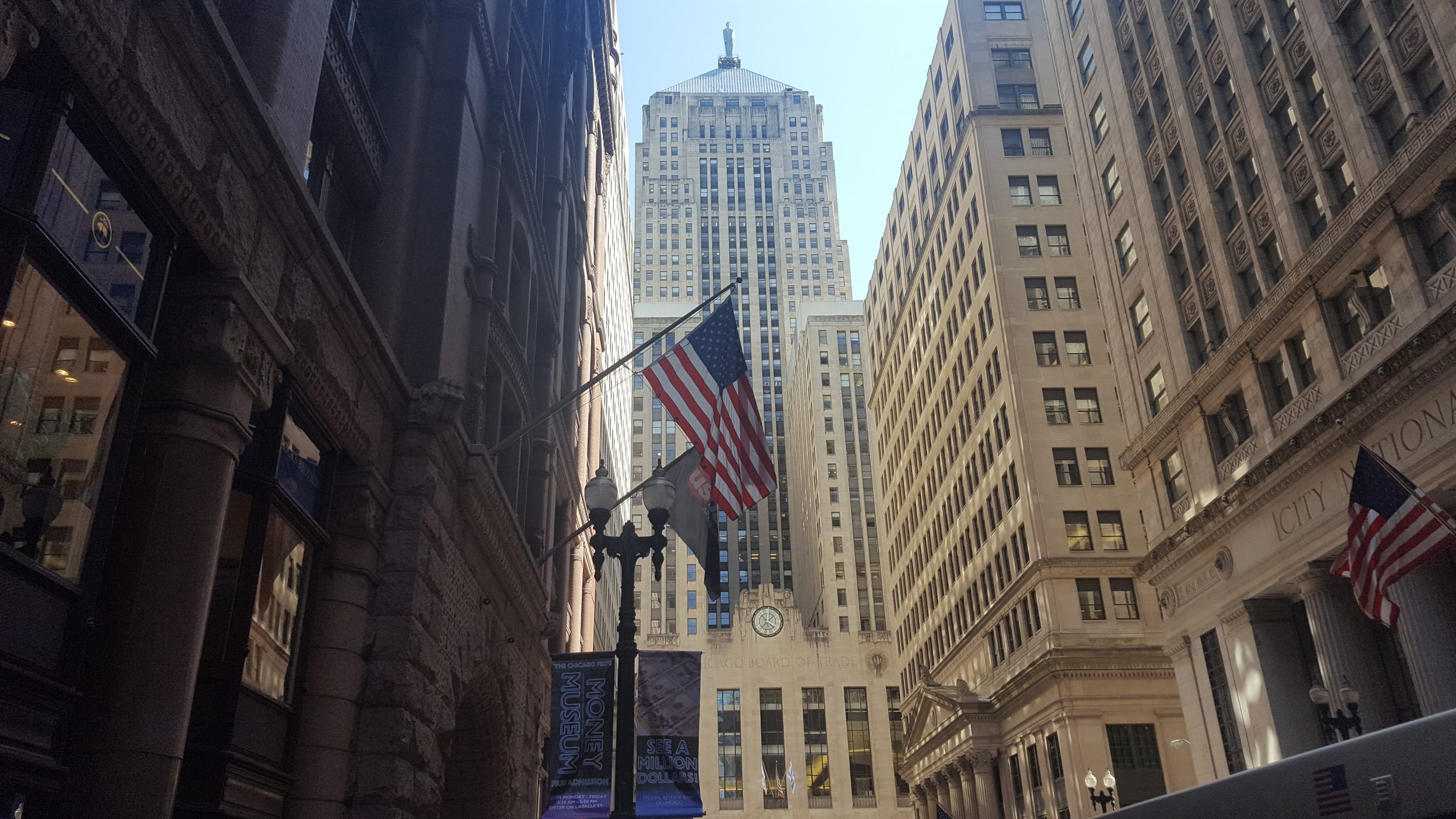I’ve been intrigued ever since I learned of the Bridgehouse Museum on Michigan Avenue. It was awesome to discover that you can actually go inside of the Michigan Avenue Bridge. The McCormick Bridgehouse & Chicago River Museum has exhibits inside and gives a glimpse of the machinery behind this engineering wonder. I had the opportunity to visit as part of my Chicago History class at North Central College. We also walk right past on our Architecture Walking Tour for Design Lovers and Historic Chicago Walking Bar Tour.
Where to Find the Bridgehouse Museum
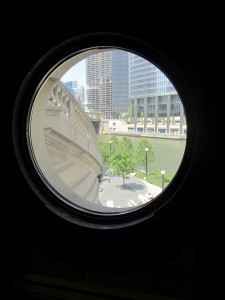 Located inside the southwest tower of the Michigan Avenue Bridge, the bridgehouse museum uses the Chicago River and the historic Michigan Avenue Bridge to tell the story of a city that grew from a “mudhole to a metropolis.” The first floor of the bridgehouse museum allows you to go into the gear room and look at the motor and gears that open and close the double-leaf, double-deck bascule trunnion bridge. How’s that for a handful of words?
Located inside the southwest tower of the Michigan Avenue Bridge, the bridgehouse museum uses the Chicago River and the historic Michigan Avenue Bridge to tell the story of a city that grew from a “mudhole to a metropolis.” The first floor of the bridgehouse museum allows you to go into the gear room and look at the motor and gears that open and close the double-leaf, double-deck bascule trunnion bridge. How’s that for a handful of words?
Bascule means “seesaw” in French, describing how the bridge works. As the counterweight pulls down the bridge comes up and vice-versa. Apparently the motor of the bridge has about the same power as a 1950s Volkswagen Beetle. The counterweight and gravity do most of the work to lift and lowe. The bridge continues to function today. You’ll see it raised more frequently during the spring and fall. That’s when ships, mostly recreational sailboats, sail up and down to the different harbors.
A River Runs By It
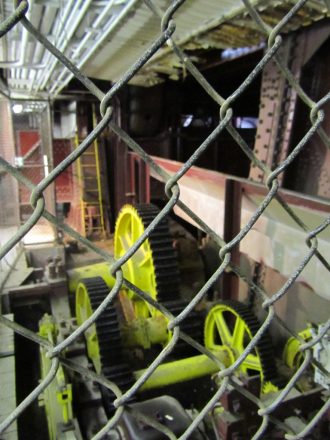
The river, of course, is what made Chicago. We’re a strategically located city – connected with the Great Lakes and the Mississippi River. One image that one can never forget shows a man standing at the edge of “Bubbly Creek,” which flows into the south fork of the river. It was disgusting, filled from meatpacking waste, like blood and offal. The decomposing entrails gave off gas that made bubbles.
The museum tells of the efforts of the Friends of the Chicago River. This non-profit is dedicated to cleaning up the river. There’s also displays about recreational activities and wildlife that thrive in the river’s ecological system.
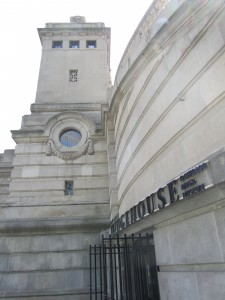 If you were walking over the Michigan Avenue Bridge you probably wouldn’t even know that a museum is there since it’s down on river level. As a museum that uses an artifact (the Michigan Avenue Bridge and Bridgehouse) to tell the story of Chicago, it’s a simple exhibit that still provides a dense amount of information in a compact space, not unlike the small skyscraper exhibit in the Marquette Building or the scale city model inside the Santa Fe Building of the Chicago Architecture Foundation. Similar to what you experience on our “Loop Interior Architecture Tour,” the McCormick Bridgehouse & Chicago River Museum is a prime example of a Chicago detour that many Chicagoans don’t even know exists.
If you were walking over the Michigan Avenue Bridge you probably wouldn’t even know that a museum is there since it’s down on river level. As a museum that uses an artifact (the Michigan Avenue Bridge and Bridgehouse) to tell the story of Chicago, it’s a simple exhibit that still provides a dense amount of information in a compact space, not unlike the small skyscraper exhibit in the Marquette Building or the scale city model inside the Santa Fe Building of the Chicago Architecture Foundation. Similar to what you experience on our “Loop Interior Architecture Tour,” the McCormick Bridgehouse & Chicago River Museum is a prime example of a Chicago detour that many Chicagoans don’t even know exists.
— Brian Failing: Research & Collections Intern and Amanda Scotese, Chicago Detours Executive Director

